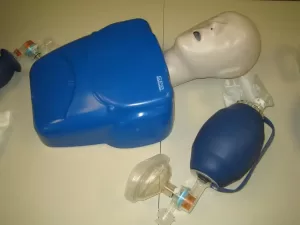The Importance of CPR & First Aid Training
In recent years, CPR and First Aid training has become increasingly popular—and for good reason. Emergencies can occur at any moment, and having the skills to respond appropriately can make all the difference. Basic knowledge of CPR and first aid can potentially save lives or prevent complications in an emergency situation. You never know when these skills might come in handy, whether it’s at home, at work, or in your community.

While there are many providers offering CPR and First Aid training, none deliver the same level of quality, expertise, and convenience as we do.
We have training providers located across the country, all offering the same high-quality programs at competitive rates. Enrolling is simple—just visit any of our location pages, fill out the enrollment form, and you’re ready to go. You can also sign up via email, phone, or in person.
CPR Training Credentials
Upon successful completion of your program, you will receive CPR training credentials. To earn these credentials, trainees must pass both a practical and written exam, except for the general public programs, which offer an optional skills test.
These credentials are valid for two years and are recognized nationwide. After two years, they can be renewed through a re-certification class, which is available for most programs. If your certification expires before you have the chance to renew, you will need to retake the full training program.
Our CPR and First Aid Programs
We offer two categories of training: Basic Life Support (BLS) and Advanced Life Support (ALS).
CPR and first aid programs
There are two categories for training: basic and advanced life support. Basic life support programs teach trainees the skills needed to give CPR, mainly compression and rescue breaths. The BLS programs also include training with defibrillators and a few basic first aid skills.
Advanced Life Support programs are complex training programs for HCPs or healthcare providers. They teach basic skills and medical management of cardiac arrest for either adult or pediatric victims. Medical management includes teaching trainees about the crash cart and the equipment and medication. Because of the extensive curriculum, ALS programs take over two days to complete.
These programs teach essential CPR skills, including chest compressions and rescue breaths. BLS also includes training on the use of automated external defibrillators (AEDs) and basic first aid.
-
Heartsaver CPR & AED – 4 hours
A program for the general public, covering one-person CPR, basic first aid, and AED training. -
Heartsaver CPR & AED (C) – 4.5 hours
Tailored for Healthcare Providers (HCPs), this course covers the same skills as the Heartsaver program but with additional details relevant to healthcare settings. -
Basic Life Support for HCPs – 4.5 hours
Designed for healthcare providers, this program covers one-person and two-person CPR, first aid, AED training, and the 2010 AHA BLS guidelines. Re-certification: 4 hours.
Advanced Life Support (ALS)
These programs are designed for healthcare professionals and offer in-depth training on the medical management of cardiac arrest and other critical care scenarios.
-
Advanced Cardiac Life Support (ACLS) – 16 hours over 2 days
This course covers the complete management of adult cardiac arrest and includes a focus on advanced interventions. Re-certification: 5-6 hours. -
Pediatric Advanced Life Support (PALS) – 14 hours over 2 days
This program teaches the complete management of pediatric cardiac arrest, including specialized techniques for infants and children. Re-certification: 6-8 hours.
Enroll Today
No matter your experience level, we offer courses that fit your needs, from beginner to advanced. Learn life-saving skills today—whether it’s for yourself, your family, or your workplace. Register now and be prepared to make a difference in an emergency.
